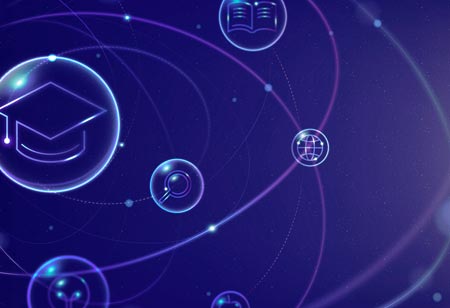THANK YOU FOR SUBSCRIBING
Be first to read the latest tech news, Industry Leader's Insights, and CIO interviews of medium and large enterprises exclusively from Education Technology Insights
Advantages of Distance Learning in Todays Times
Numerous elements contribute to online learning's increased efficiency.

By
Education Technology Insights | Thursday, April 07, 2022
Stay ahead of the industry with exclusive feature stories on the top companies, expert insights and the latest news delivered straight to your inbox. Subscribe today.
To halt the spread of COVID-19, facilities, including schools, were closed. As a result, the educational system adapted distance education. Distance learning, or DL, is a mode of instruction and learning remotely.
FREMONT, CA: The exponential growth and development of technologies during the last few decades undoubtedly resulted in the world's rapid advancement in the twenty-first century, resulting in enormous institutional and social changes. As the number of technological advances and discoveries increases, so do students' chances of achieving academic achievement.
Children can attend online classrooms using video conferencing software, maintain interactive dialogue with their teachers, engage in peer-to-peer learning, submit assigned work, and access the most current learning resources on the web platform.
Education is more efficient: Numerous elements contribute to online learning's increased efficiency. Teachers have recognized that, because they do not connect directly with students, they must incorporate more innovation into the curriculum to maintain students' attention and ensure the efficient and successful transmission of knowledge. Teachers can utilize multimedia information, such as existing lectures, documentaries, podcasts, current research, and expertise connected to the teaching unit and virtual journeys, by applying various methods enabled by digital technology.
Additionally, if a school has an arrangement with another educational institution, collaborative virtual conferences might be organized. Thus, through the use of new digital technologies and teachers' creativity, youngsters now have the potential to receive an education on par with, if not better than, their older counterparts.
Flexible and self-paced learning: This advantage of distant learning primarily benefits students who wish to set their lecture schedule and learn at their speed. They are primarily pupils who exhibit a high level of independence and responsibility, while those who do not may be pushed to develop these characteristics. Online education that does not require synchronous learning, or students physically present in the classroom, provides access to lectures and learning materials 24 hours a day, which is a significant benefit for students who work and study or who want to focus on specific areas of learning that will help them advance their careers. The only part of distance learning that does not allow for flexibility is the requirement to take mandatory tests and complete assignments by the specified time.
Students get access to the most recent digital research materials: This benefit was unfathomable only a decade ago for most educational institutions, both high schools and universities. Thanks to the Internet, all new knowledge and research are promptly published and made available on academic platforms. This benefit benefits both lecturers and students. Teachers can incorporate freshly posted analysis into their lectures, while students interested in delving deeper into a subject can access the research materials linked with the subject.







